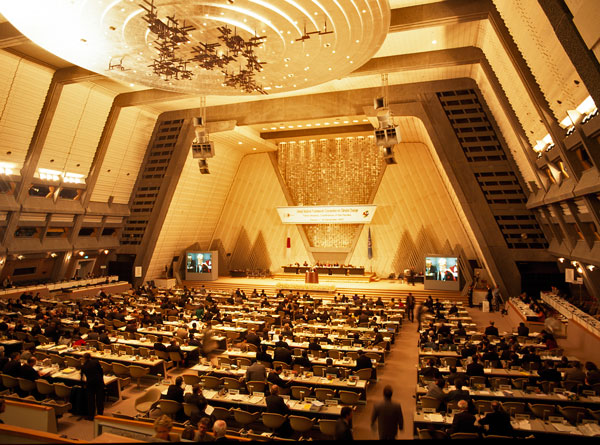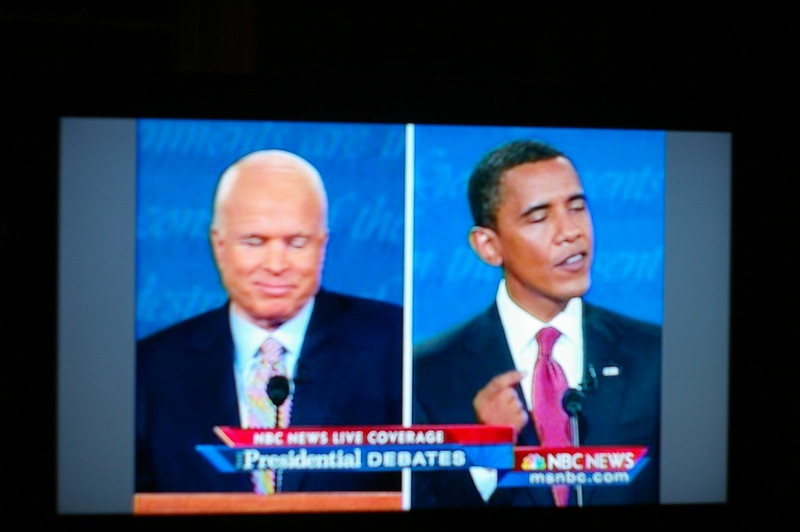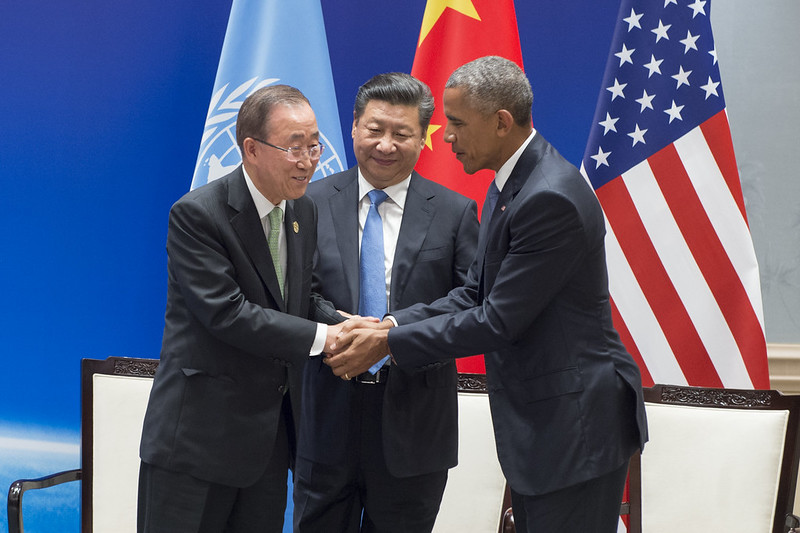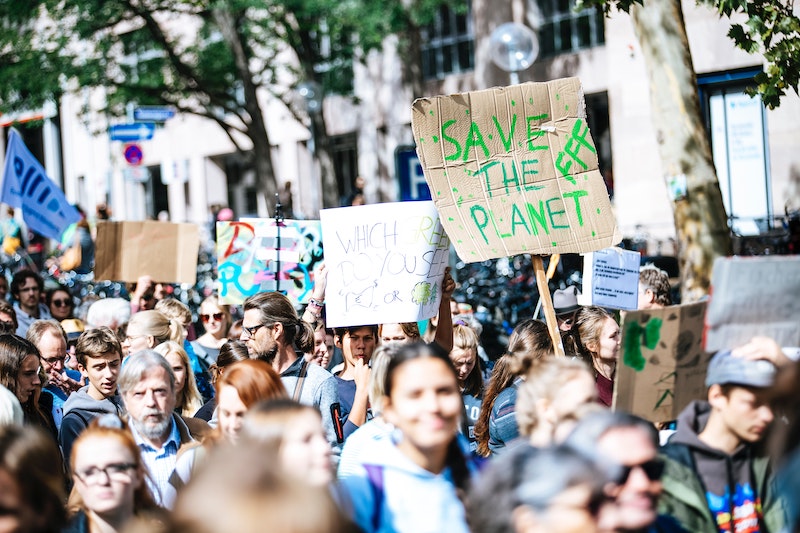Scientists first began to grasp the mechanics of climate change more than 150 years ago, and by the mid-twentieth century, the fact that the world was warming had become all-but-incontrovertible. That has not made addressing the problem easy, though. For decades, every bit of progress has been matched by new obstacles.
The fight, then, is far from over—but it's worth learning lessons from the past. Here are some of the key milestones so far.
International
UN begins to study climate change
The United Nations convenes a panel of experts, asking them to study the long-known threat of climate change. The resulting report, released in 1977, concludes that CO₂ is indeed causing global warming.
1974

Credit: World Meteorological Association
International
World Climate Conference
Hundreds of experts from more than 50 countries arrive in Geneva to discuss the science. As a part of the conference, a core group of experts releases a declaration that further study is "urgently necessary"—and that we need to go beyond just studying the problem and begin to prevent further changes to the climate.
1979

Credit: NARA/Reagan Library
United States
Conservative backlash
In the U.S., President Ronald Reagan takes office. After decades of bipartisan cooperation on environmental issues, Reagan begins to roll back protections. His administration goes on to defund solar energy research and encourage more coal production on federally owned land. When a NASA scientist plans to publicly testify about climate change, the administration tries to censor his statement.
1981
International
The Intergovernmental Panel on Climate Change is formed
The UN launches the Intergovernmental Panel on Climate Change—the first international, climate-focused organization with real political heft. Its scientists do not just come together as researchers; they are also official representatives of their national governments. The IPCC begins to compile a series of reports, which culminate every few years with a major “synthesis” report.
1988
United States
The Global Climate Coalition begins to promote contrary science
A group funded by leaders from the petroleum and automotive industries—to the tune of tens of millions of dollars over the next decade—begins to promote the idea that climate change is not caused by humans. Its campaigns coincide with rising opposition to climate policy among conservative U.S. politicians.
1989
International
The first IPCC synthesis report indicates that warming has already begun
1990

Copyright: United Nations
International
First Earth Summit
At a UN conference in Rio de Janeiro, the world's first climate-focused treaty is developed. While there is a general goal for emissions reductions, the main focus of the United Nations Framework Convention on Climate Change (UFCCC) is setting up a structure for future, action-oriented treaties. Particularly, it mandates participation in future meetings, called Conferences of Parties (COPs).
1992
International
The UFCCC officially goes into effect
1994
International
The IPCC releases its second report
1995
International
COP1 is held in Berlin, Germany

Copyright: United Nations
International
The Kyoto Protocol
The first global climate plan emerges.The Kyoto Protocol sets "binding" emissions targets for the world's developed nations. (Developing nations are not given targets, which leads to some controversy.) The Kyoto Protocol allows countries to engage in emissions trading and carbon offsets to make up for some of their emissions. Read our full post on the treaty here.
1997
International
The U.S. pulls out of Kyoto talks
President George W. Bush declares that he will not seek to ratify the Kyoto Protocol. (Conservative U.S. politicians see the treaty as unfairly damaging the U.S. economy relative to other countries, especially given that it does not apply to developing nations.) For the past three years, negotiations on the Kyoto "rule book" have been ongoing; now, with the U.S. out, the rule book is finally completed.
2001
International
The third IPCC report indicates that future damage is likely to be extensive.

Credit: John Douglas / Creative Commons
International
Global Heatwave
Europe suffers hotter summer weather than at any point in the past 500 years, leading to broad public concern about climate change. Meanwhile, skepticism remains palpable in the U.S.
2003
International
The Kyoto Protocol goes into force
Russia, after years of hedging, finally ratifies the Kyoto Protocol—giving the treaty enough international backing to go into force. The European Union launches an emissions trading scheme as a part of its effort to reduce its contribution to global warming.
2005

Credit: Steve Rhodes / Creative Commons
International
Increasing public attention
Former Vice President Al Gore releases An Inconvenient Truth, a documentary that boosts public understanding of climate change—but also political polarization. In the United Kingdom, the Stern Report declares that stopping climate change will cost less than the expected damages.
2006
United States
Massachusetts v. EPA
The U.S. Supreme Court determines that greenhouse gases are a pollutant, and that the Environmental Protection Agency's rationale for not regulating emissions from cars are inadequate—though no formal solution is prescribed.
2007
International
Al Gore wins a Nobel Peace Prize for his work on An Inconvenient Truth.
International
The IPCC releases its fourth report, with an even clearer statement that climate change is human-caused.

Copyright: Dan Iggers / Creative Commons
United States
A brief consensus
In the U.S., both presidential candidates—Republican John McCain and Democrat Barack Obama—suggest we must fight climate change, though they offer different solutions. At the same time, a non-profit think tank called the Heartland Institute launches an annual conference that becomes a leading gathering of climate change skeptics.
2008
International
Climategate
A tranche of over 1,000 hacked emails is released, sparking a controversy known as "climategate." To some skeptics, these emails suggest the science has been manipulated. Multiple investigations find that while some scientists had been insufficiently open with their data, the science behind climate change is sound.
2009
United States
In the meantime, a U.S. bill intended to reduce greenhouse emissions fails for lack of support in the Senate.
International
Talks at a UN conference Copenhagen, aiming to find a replacement for the Kyoto Protocol, result in a weak and nonbinding resolution.
United States
Shifting political winds
A mid-term election puts the Republican Party in control of both the U.S. House of Representatives and Senate; some of the newly elected legislators are openly skeptical of climate science.
2010
International
Kyoto begins to crumble
Canada withdraws from the Kyoto Protocol. Japan and Russia announce that they will remain a part of the treaty for the next year, but will not take on further commitments if it is extended after 2012.
2011
International
The Doha Amendment
In Doha, Qatar, leaders develop a new amendment intended to extend the Kyoto Protocol through 2020. Due to lack of support by national governments, this amendment never goes into effect.
2012

Copyright: United Nations
International
A breakthrough in Paris
The successor to the Kyoto Protocol is developed at meetings in Paris, France. For the first time, developing nations will be held accountable for emissions reductions. But the Paris Agreement has an obvious flaw: there is no mechanism by which to hold countries accountable.
2015
United States
U.S. abandons the Paris Agreement
Newly elected U.S. president Donald Trump, who has repeatedly declared that climate-change is a hoax, announces his intention to withdraw the nation from the Paris Agreement.
2017

Credit: Markus Spiske on Unsplash
International
A new wave of activism
Young activists—who will suffer the most from climate change—help spur a global wave of protests and demonstrations. These protests push Democratic politicians in the U.S. to back a "Green New Deal." Legislation outlining the ideals of the Green New Deal is introduced in Congress, though given the Republican majority in the Senate this is largely a symbolic gesture.
2019
International
Europe commits
The European Parliament votes to support a "European Green Deal," quite similar to the Green New Deal. This plan—still being developed—aims to make the continent carbon-neutral by 2050, while overhauling the economy so growth is not dependent on resource consumption. The plan will also ensure that "no person and no place is left behind."
2020
An approaching U.S. election could once more shift political winds in one of the world’s highest-emission nations. The rest of the world, meanwhile, is expected to commit to more stringent emissions targets at COP26, which was originally scheduled for November 2020 and postponed a year due to the COVID-19 crisis. The pandemic also led to a global decline in emissions, but it’s unclear whether that decline will last. It’s clear, though, that the next few years will be decisive: a recent IPCC report indicated that in order to hold warming below 1.5°C, action is required before 2030.
2020+










